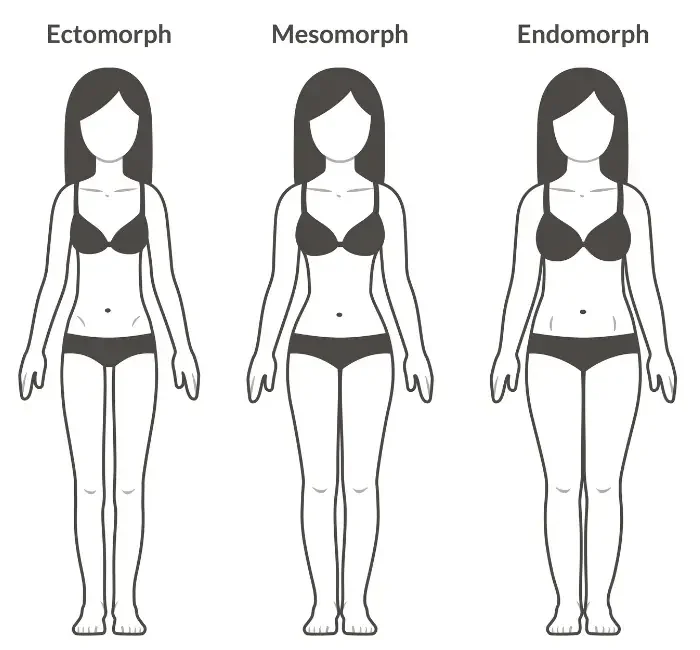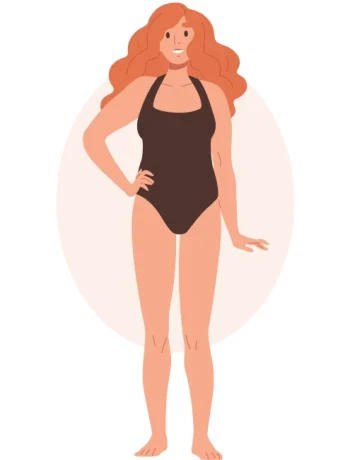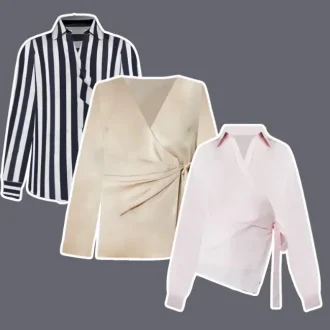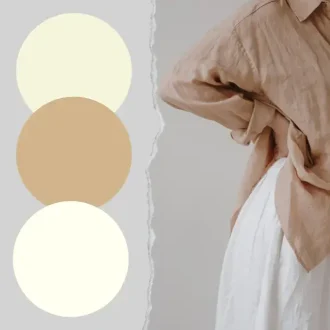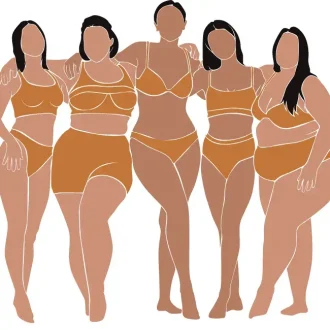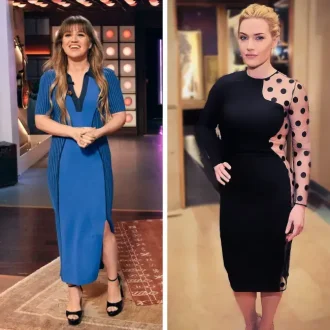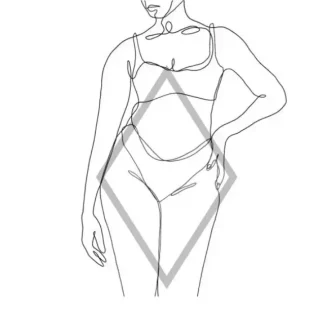- IN THIS ARTICLE
Understanding how to determine your body type is more than a fashion statement. It’s a pathway to embracing your unique beauty and dressing with confidence.
In the world of women’s fashion, recognizing whether you’re an ectomorph, mesomorph, or endomorph isn’t just about fitting into the latest spring outfits. It’s about discovering styles that celebrate your individuality.
This guide aims to demystify body types, from the slender lines of an ectomorph to the curvaceous silhouette of an endomorph, and the balanced build of a mesomorph. With a focus on body measurements and the waist-hip ratio (WHR), we’re here to offer you a style guide tailored just for you.
Let’s embark on a journey to identify your body type, unlocking the secrets to better styling choices that enhance your natural beauty and elevate your fashion game.
Understanding Body Types
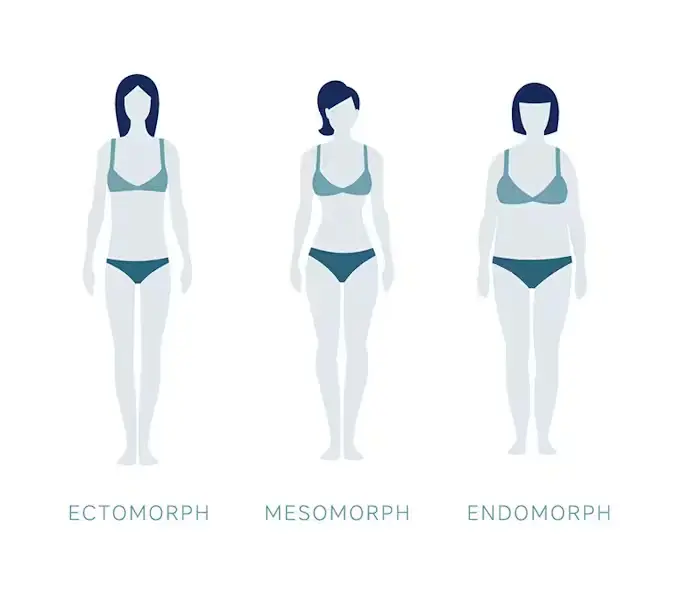
When it comes to dressing with confidence and style, recognizing your body type is the first step. Three main body types have been widely acknowledged: ectomorph, mesomorph, and endomorph. Each body type has distinct characteristics, affecting not just our physical appearance but also how we metabolize food and respond to physical activity. Let’s delve into the details of each body type to help you identify yours and embrace your unique beauty.
Ectomorph
Ectomorphs are often described as having a lean build, which is characteristic of the ectomorph body type. They typically have a high metabolism and low body fat, which means they can eat quite a bit without gaining much weight. Physically, ectomorphs have a narrow frame, slender limbs, and not a lot of fat or muscle mass. They might find it challenging to gain weight or muscle, no matter how much they eat or exercise. For ectomorphs, the focus might be on incorporating strength training and a nutrient-rich diet to build muscle mass effectively.
Mesomorph
Mesomorphs hit the genetic lottery when it comes to fitness—they naturally have a muscular and athletic build, characteristic of the mesomorph body type. With a moderate metabolism, mesomorphs can gain and lose weight more predictably than the other body types. They tend to have a well-defined waist, broad shoulders, and an evenly distributed muscle and fat mass. Mesomorphs excel in physical activities and may find it easier to build muscle. The key for mesomorphs is to balance their workouts between cardio and strength training to maintain their natural physique.
Endomorph
Endomorphs have a soft, curvier figure. Managing body weight through a balanced diet and regular exercise is crucial for endomorphs to maintain a healthy physique. They tend to have a slower metabolism, which means they gain weight more easily than the other types. Characterized by a solid frame, endomorphs often have a higher percentage of body fat, concentrated around the midsection, hips, and thighs. Despite the challenge in losing weight, endomorphs can achieve fantastic results with a combination of cardiovascular exercise, strength training, and a carefully managed diet. Embracing their curves, endomorphs can focus on exercises and nutrition that highlight their strengths and work towards a healthy body composition.
How to Measure Your Body
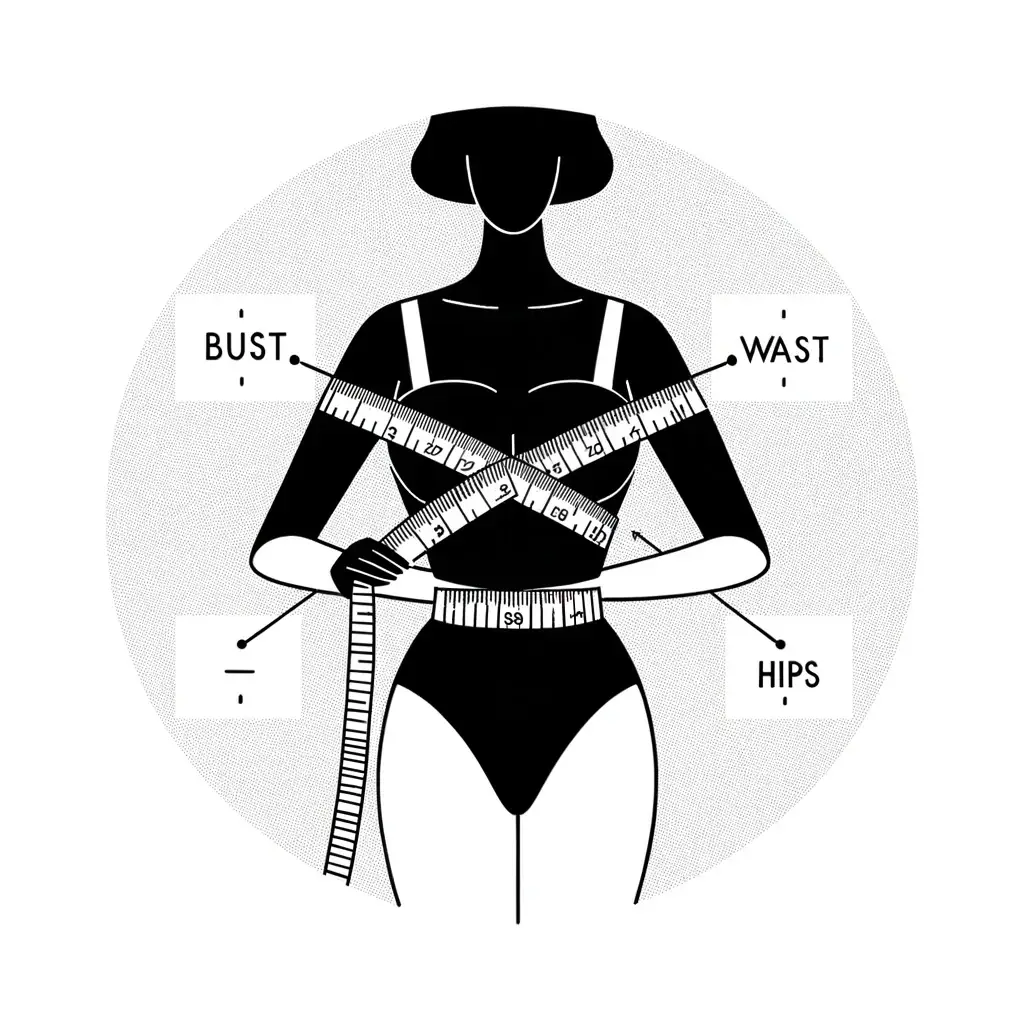
Knowing your body measurements is crucial for identifying your body type and choosing outfits that flatter your figure. Measuring yourself might sound straightforward, but doing it correctly is key to getting accurate results. Here’s a simple guide to measuring your bust, waist, high hip, and hip sizes, ensuring you get the perfect fit every time.
Bust Size
How to Measure: Wear a non-padded bra that fits well. Find the fullest part of your chest, and wrap the measuring tape around it. Keep the tape parallel to the ground and ensure it’s snug but not tight. The tape should not compress the bust, which might lead to an inaccurate measurement.
Waist Size
How to Measure: The waist is the narrowest part of your torso, typically located just above the belly button. Stand up straight and exhale gently before wrapping the tape around your waist. Again, aim for snug but not tight, to avoid skewing the measurement.
High Hip Size
How to Measure: The high hip is about 3 to 4 inches below your waist, around the pelvic bone area. This measurement is important for fitting pants and high-waisted skirts. Wrap the tape measure around your high hip, ensuring it remains parallel to the floor for an accurate reading.
Hip Size
How to Measure: Locate the widest part of your hips, which is usually over your hip bones and includes the fullest part of your buttocks. Measure around this part with the tape measure straight and snug. This measurement helps in selecting the right size for bottoms and dresses.
Tips for Accurate Measurements
Stand Straight: Your posture affects your measurements. Stand tall with your feet together for the best results.
Snug, Not Tight: The tape should lie flat and snug on your skin, but not so tight that it digs in or compresses your body.
Use a Mirror: Standing in front of a mirror can help ensure the tape measure is positioned correctly and remains level around your body.
Ask for Help: If possible, having someone else take your measurements can increase accuracy, especially for hard-to-reach areas.
Armed with these measurements, you’ll have a foundational understanding of your body’s proportions, aiding in the identification of your body type and the selection of clothing that showcases your best features. Remember, the goal is to dress in a way that makes you feel confident and beautiful, celebrating your unique shape.
Identifying Your Body Shape
Understanding your body shape is like unlocking the secret to enhancing your natural silhouette. By using your body measurements like bust, waist, hip, and high hip size, you can identify whether you’re an apple, pear, rectangle, or hourglass. Each shape has its unique characteristics, and knowing yours can guide you in choosing outfits that celebrate your body. Let’s decode these shapes and understand the role of the waist-hip ratio (WHR) in this process.
1. Apple Body Shape
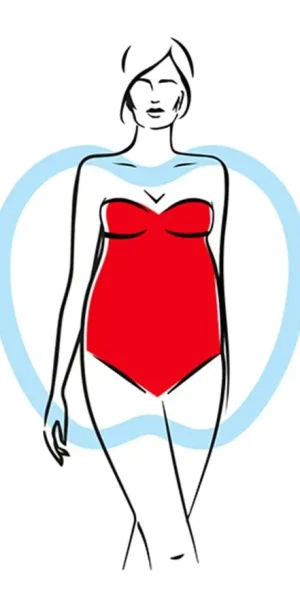
Characteristics: Apple-shaped individuals carry more weight around their midsection with a broader waistline, leading to a fuller look in the stomach area. They may have slimmer legs and arms.
Identification: You might be apple-shaped if your waist measurement is larger than your bust and hip measurements.
2. Pear Body Shape
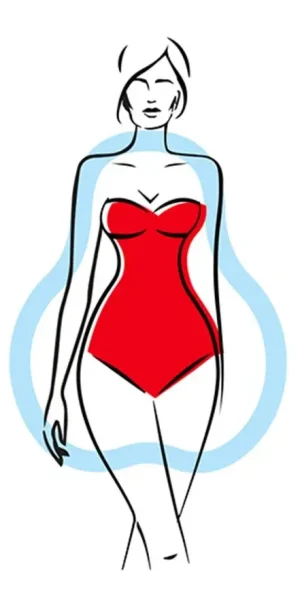
Characteristics: Pear or triangle shapes have wider hips than shoulders. The lower body is more prominent, with a fuller buttock and thighs.
Identification: This shape is identified when the hip measurement is significantly larger than the bust measurement.
3. Rectangle Body Shape
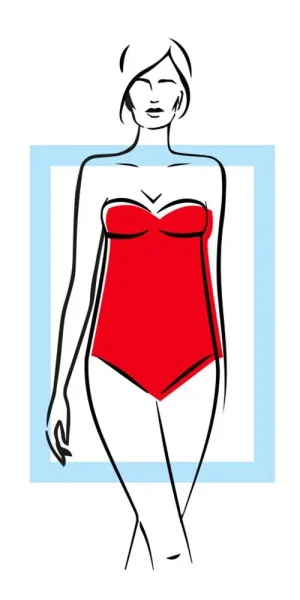
Characteristics: Those with a rectangle body shape have similar bust, waist, and hip measurements, leading to a straighter overall silhouette without a well-defined waist.
Identification: If your waist measurement is less than 9 inches smaller than the hip or bust measurement, you likely have a rectangle shape.
4. Hourglass Body Shape
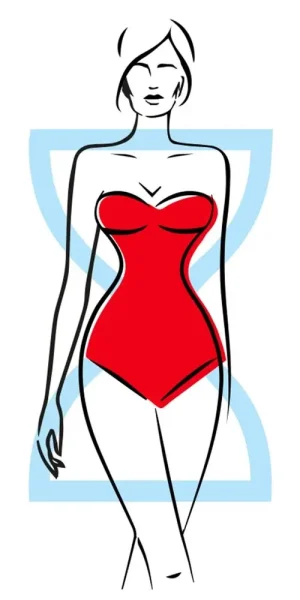
Characteristics: Hourglass figures have a well-defined waist with bust and hip measurements that are fairly equal, creating balanced curves.
Identification: An hourglass shape is indicated when the bust and hips are similar in size, and the waist is significantly narrower.
The Significance of Waist-Hip Ratio (WHR)
WHR is a valuable tool in determining body shape. It’s calculated by dividing the waist measurement by the hip measurement. A lower WHR suggests a figure closer to the hourglass shape, with a pronounced waist. Conversely, a higher WHR might indicate an apple shape, where the waist is broader in relation to the hips.
Hourglass: Typically, a WHR of 0.7 or lower.
Apple: WHR higher, indicating a fuller midsection.
Pear: WHR lower, showing a narrower waist compared to hips.
Dressing for Your Body Type
Embracing spring’s casual styles becomes a transformative experience when you dress according to your body type. This guide provides tailored advice for choosing outfits that celebrate and flatter your unique shape, whether you’re an apple, pear, rectangle, or hourglass.
For a deeper dive into mastering the art of dressing for your body type, including expert tips and more extensive outfit inspirations, explore our pillar article, “How to Dress for Your Body Type: The Ultimate Guide”.
There, you’ll find a wealth of information to further refine your style, ensuring that every outfit not only looks great but feels like a true expression of you.
Apple Body Shape
Tops: Look for tops with V-necks or deep scoop necks to elongate your neckline. Tunics and tops with empire waists can also help minimize the midsection.
Bottoms: Opt for straight-leg or bootcut jeans that balance the upper body’s width. High-waisted styles can help tuck in the tummy area.
Dresses: A-line dresses or wrap dresses with a tie waist are flattering, as they highlight your slimmer legs while skimming over the waist.
Accessories: Long necklaces and scarves can add vertical lines, creating a more balanced silhouette.
Pear Body Shape
Tops: Bright colors and bold prints draw attention to the upper body. Boat necks and wide collars help broaden the shoulders, balancing wider hips.
Bottoms: Dark, solid-colored bottoms with a slight flare or straight-leg cut can minimize the hip area. High-waisted skirts that gently flare out are also flattering.
Dresses: Look for dresses that accentuate the waist and then gently flare out over the hips, such as fit-and-flare styles.
Accessories: Statement necklaces or earrings can draw the eye upwards, while belts at the waist emphasize your narrow midsection.
Rectangle Body Shape
Tops: Layering can add dimension, such as a fitted blouse under a cardigan. Tops with ruffles, bows, or other details can add volume to the bust and hip area.
Bottoms: Experiment with textures and prints to add interest and create the illusion of curves. A-line skirts can also give the appearance of wider hips.
Dresses: Belted dresses or those with cinched waists can create an hourglass figure, highlighting the waist.
Accessories: Belts are your best friend, as they define the waist. Bold, chunky accessories can also add volume and interest to your outfits.
Hourglass Body Shape
Tops: Fitted tops that highlight your waist are ideal. Wrap tops, fitted blouses with peplum details, and tops with waist ties can enhance your natural curves.
Bottoms: High-waisted pants and skirts showcase the waist and complement your curves. Skinny or straight-leg jeans fit well on hourglass shapes.
Dresses: Bodycon dresses or any dress that follows the natural curve of your body, highlighting the waist, are perfect for hourglass figures.
Accessories: Skinny belts worn at the waist can accentuate your narrowest point. Minimalistic accessories work well to keep the focus on your silhouette.
Health Considerations by Body Composition
Every body is unique, not just in shape and size, but also in how it might respond to different health risks. For mesomorph body types, muscle maintenance is crucial, and dietary and fitness recommendations often emphasize the importance of protein intake to support this. Understanding the health considerations associated with different body types is essential for adopting a lifestyle that supports your wellbeing. Here’s how your body type might influence your health and what you can do to manage risks.
Ectomorph
Ectomorphs, with their slim frames and fast metabolisms, generally have a lower risk of obesity-related diseases. However, they might face challenges with bone density and muscular strength as they age. Strong arms and legs are particularly important for maintaining overall muscular development and physical performance. To support bone health, incorporating strength training and a diet rich in calcium and vitamin D is beneficial.
Mesomorph
Mesomorphs, blessed with naturally muscular bodies and efficient metabolisms, tend to have a healthier cardiovascular profile due to their active lifestyle. Muscle growth can be optimized by maintaining a balanced diet and regular exercise, which are crucial for promoting overall health. However, without regular physical activity, they might gain weight quickly, potentially increasing the risk of metabolic syndrome and heart diseases. Maintaining a balanced diet and regular exercise regimen can help manage these risks.
Endomorph
Endomorphs carry more body fat, especially around the abdomen, which can lead to a higher risk of heart disease, type 2 diabetes, and high blood pressure. It’s crucial for endomorphs to engage in regular cardiovascular and strength-training exercises. Incorporating high intensity interval training (HIIT) into their routine can be particularly effective. Eating a balanced diet low in processed foods and high in fruits, vegetables, lean proteins, and whole grains can help manage weight and reduce health risks.
Waist-Hip Ratio (WHR) and Health
The waist-hip ratio (WHR) is a significant health marker for all body types. Incorporating a consistent exercise routine can help maintain a healthy WHR by improving strength, flexibility, and weight management. A higher WHR indicates more abdominal fat, associated with a greater risk of metabolic syndrome, heart disease, and type 2 diabetes. Aim for a WHR below 0.85 for women to minimize these risks. Regular monitoring of WHR, alongside a healthy lifestyle, can provide insights into your health status and risks.
Body Positivity and Embracing Diversity
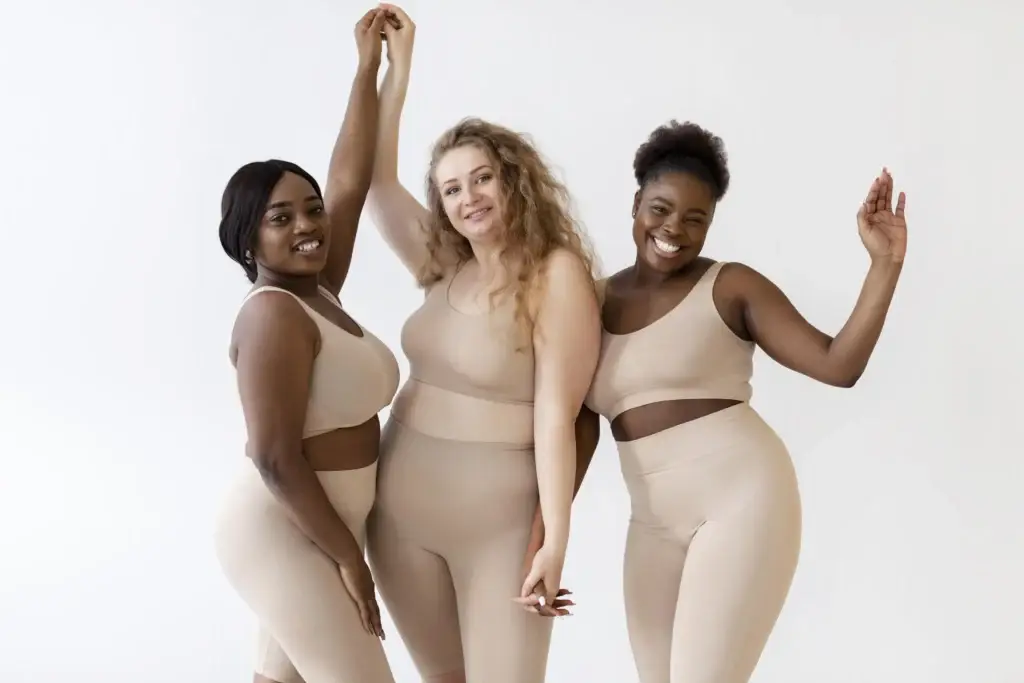
In a world where media often showcases a narrow spectrum of beauty, embracing your unique body type and shape is a revolutionary act of self-love and acceptance. Incorporating weight training tailored to your specific body type—whether you are an endomorph, mesomorph, or ectomorph—can enhance and celebrate your unique physical characteristics. Body positivity is more than a trend; it’s a movement that celebrates the beauty in diversity and encourages individuals to love themselves exactly as they are. Here’s how you can practice body positivity and cherish the diversity of women’s bodies.
Celebrate Your Uniqueness
Everybody is unique, with its own strengths and beauty. Celebrating your unique body type through fitness can also help you gain muscle tailored to your specific needs. Whether you’re an ectomorph, mesomorph, endomorph, or somewhere in between, your body type is part of what makes you, you. Celebrate this uniqueness instead of comparing yourself to others. Remember, diversity in body shapes adds to the rich tapestry of human appearance, and each shape has its own beauty.
Practice Self-Acceptance
Self-acceptance is the cornerstone of body positivity. It involves embracing all aspects of your body, including parts you may have been taught to view negatively. Recognize the incredible things your body does for you every day, from allowing you to experience the world to being the vessel through which you express your personality and creativity.
Challenge Beauty Standards
The beauty standards portrayed in media and advertising are not only narrow but also often unrealistic. Challenge these standards by seeking out and supporting media that showcases a wide range of body types, skin colors, and ages. Celebrating and consuming diverse representations can reinforce the notion that beauty comes in all shapes and sizes.
Supportive Communities
Find and engage with communities that promote body positivity and inclusivity. These can be online groups, social media platforms, or local organizations that encourage discussions about body image, self-esteem, and diversity. Being part of a supportive community can provide a sense of belonging and reinforce positive messages about body diversity.
Kindness and Compassion
Be kind to yourself and others. Negative self-talk and criticism can be damaging to your well-being. Practice compassion by speaking to yourself as you would to a dear friend. Extend this kindness to others, recognizing that everyone is on their own journey toward self-acceptance.
Embrace Health at Every Size
Health at Every Size (HAES) is a principle that supports people in adopting health habits for the sake of health and well-being, rather than weight control. Embrace activities that make you feel good, eat in a way that nourishes your body without restriction, and measure health in terms of physical and emotional well-being, not just by the numbers on a scale.
Body Positivity in Action
Putting body positivity into practice means making choices that reflect a love and respect for your body. Dress in ways that make you feel confident and happy, engage in physical activities you enjoy, and surround yourself with positivity.
Remember, body positivity is not just about feeling positive about your body all the time. It’s about acknowledging your worth and beauty, regardless of how closely you fit societal beauty standards. By embracing and celebrating the diversity of women’s bodies, we can foster a more inclusive and empowering environment for everyone.
Conclusion
Embracing your unique body type is the first step towards unlocking your personal style and dressing with confidence.
Through understanding the nuances of ectomorph, mesomorph, and endomorph body types, measuring accurately, and identifying your shape, you’re now equipped to make fashion choices that flatter and celebrate your natural silhouette.
Remember, the goal isn’t to fit into a specific category, but to understand your body’s unique characteristics and dress in a way that enhances your individual beauty.
Let this guide be your companion on a journey of self-discovery, body positivity, and fashion exploration. Wear what makes you feel good, knowing that true style is about expressing who you are, inside and out.
FAQ
How do I accurately measure my body to determine my body type?
To find out your body type, you’ll need a measuring tape. Measure the fullest part of your bust, the width from shoulder to shoulder, your natural waistline (above your belly button), and the widest part of your hips. These measurements will help you compare your proportions to identify your body shape, whether it’s strawberry (inverted triangle), banana (rectangle), apple (circle), pear (triangle), or hourglass.
What styles best compliment an apple body shape?
For apple body shapes, focusing on elongating the torso and showcasing the legs is beneficial. Opt for streamlined tops and jackets, slim-fit dresses that end above the knee, and straight-leg jeans. These choices can help balance your silhouette by drawing attention away from a broader top half.
Can pear-shaped bodies wear A-line skirts?
Yes, A-line skirts are ideal for pear-shaped or triangle body types as they glide past the hips, flattering your lower half while drawing attention to your narrow waist. Bright colors or prints on the upper body and darker colors on the bottom half can also help draw attention upwards and balance your figure.
Does knowing my body type really matter in fashion?
While fashion is about expressing individuality, understanding your body type can be akin to knowing your skin tone when choosing makeup, it’s not the ultimate deciding factor but can guide you in making choices that flatter your natural silhouette. It helps in selecting clothing that makes you feel confident and look your best, celebrating your unique body.
